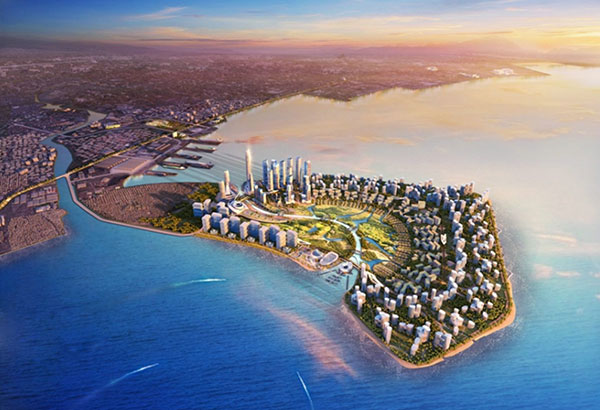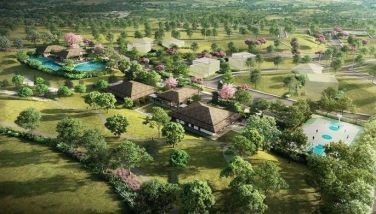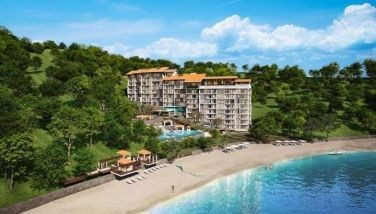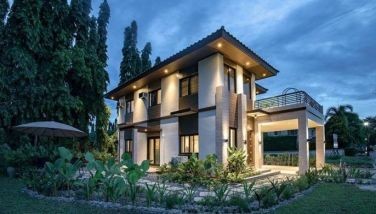World’s biggest ‘smart city’ to rise in Philippines

Aerial perspective of the 407-hectare New Manila Bay – City of Pearl project.
MANILA, Philippines - With the sustained growth of the Philippine economy, the local property market continues to attract massive investments, and foreign players are not passing up on the opportunities the country has to offer.
But with the availability of developable land in Metro Manila becoming limited, reclamation is starting to be a feasible option for developers to acquire land in the country's capital.
The Manila Bay area has had its share of reclaimed projects in the past, such as the ongoing Aseana City development, but reclaiming land as a landbanking option is still gaining attention from developers.
One promising reclamation project about to rise in the coming years is New Manila Bay City of Pearl.
The 407.42-hectare reclamation project will be funded and developed by a consortium led by local company UAA Kinming Group Development Corp., along with a global mix of partners from Hong Kong, China, Southeast Asia, Europe and other regions.
With a global roster undertaking the project as a “self-sufficient” city, Hong Kong -based architectural firm Ho & Partners Architects, Engineers & Development Consultants Ltd. (HPA), the architect of the New Manila Bay development, said the project will be an international destination.
“The project’s ultimate goal is to create social mobility for Filipinos and an international destination for cultural integration,” HPA deputy managing director Nicholas Ho told The STAR in an email interview.
Ho said the public-private partnership project between the international consortium and the city government of Manila aims to create the biggest smart city in the world.
Key features
Set to be a “city within a city” in the heart of Manila, the project will have a capacity of hosting close to a million people and offer residents everything within their reach, Ho said.
Similar to the components of a typical township development pursued by most developers today, New Manila Bay will also feature a central business district, with other offerings such as residential, retail, entertainment, infrastructure, medical, education, sports and other supporting facilities.
“The city will also feature a 8,000-seat multi-purpose stadium that can play host to international sports and entertainment events, and a world-class exhibition convention center to cater to regional and global conferences,” Ho said.
Also, the project will feature a central park integrated into an 18-hole golf course next to the river to provide optimal public space that connects with the 10-kilometer open waterfront promenade surrounding the island.
“New Manila Bay – City of Pearl will be a truly one of a kind city development that belongs to everyone, from international to local,” Ho said.
Filipino design
While the project aims to attract a share of international audience, Ho said the architectural design of the project will incorporate Filipino details.
“The design originates from the Pearl of the Orient, which is the Philippines’ symbol from half a century ago: a national pride that encompasses its rich history, culture and its people’s enduring spirit,” he said.
He added the shape and design of the city features a seven-island design, which symbolizes the expanding shell revealing the hidden pearl in the middle.
“It is the future of the Philippines, a new frontier that the country truly deserves, and it will be the international benchmark for all developing countries to create social mobility, sustainable and smart city and a brighter future,” Ho said.
Staying true to its goal of being a smart and sustainable city, the project will utilize a number of green features such as its revolutionary design that will provide more than 60 water-facing frontage to maximize the surface area for tidal and wave renewable energy production.
“The central spine is incorporated with a solar canopy for shelter and renewables,” Ho said.
He added the canopy also serves as the storm water recycling collection device, where the recycled water will be used for cooling, irrigation and flushing in localized districts, to ensure self-sufficient district sustainability.
The future for Filipinos
While reclamation for the 407-hectare project begins this year, the entire city is expected to be completed by 2035.
Ho said the project will be developed in seven phases, with the first phase targeted to be completed over the next three years.
“Phases will be rolled out pro rata, with every phase taking roughly 2.5 years,” Ho said.
With construction of New Manila Bay to span almost two decades, Ho said the project looks to cater to the future generation of Filipinos.
“As mentioned, the project is about social mobility, taking the Philippines to the next level, about creating a better future for the youth and next generations of Filipinos,” Ho said.
He further explained that the New Manila Bay – City of Pearl is about creating a hardware and software integration that allows international and local talents to grow and assimilate, from financial, cultural, educational and medical sectors.
“It is the city that the people of the Philippines truly deserve,” Ho added.
- Latest



























